//Mutsu Wada Homma (2nd from the left) with Rev. Masahiko Wada (2nd from the right) at Amache Concentration Camp in 1945. The granite monument holds the name of 148 persons Japanese Americans who died fighting for the U.S. in WWII. Photo provided by Mitch Homma.
Editors Note: The terms concentration camp and relocation camp are used in this story in favor of internment camp. Furthermore, survivors and descendants of this event prefer to refer to the Granada Relocation Camp simply as “Amache.” Survivors have asked that the singular use of the word ‘camp’ is avoided in order to circumvent viewing the event with brevity.
At 7:55 a.m. on Dec. 7, 1941, the Imperial Japanese Navy attacked Pearl Harbor. During the strike, 2,403 U.S. personnel were killed and 19 naval vessels were destroyed or damaged.
By 8:30 p.m. Min Tonai’s father was arrested.
After the bombs were dropped, families began burning any sign of loyalty to Japan. But for some, it wasn’t enough. Federal agents came for people of high standing within the community. Teachers, pastors and business owners were taken with no promise of return. The rest of the community would spend a few short months in fear before they were also arrested.
President Franklin D. Roosevelt signed Executive Order 9066 on Feb. 19, 1942. Tonai and the remainder of his family were soon brought three hours southeast of Denver to the Granada Relocation Center, commonly referred to as Amache.
The National Parks Service is continuing the process of reviewing the significance of Amache and the nine other Japanese concentration camps. In April the NPS awarded $3.1 million in grants for renovation projects throughout the sites, $64,000 of which was given directly to Amache. But the agency is looking to further protect the history of Amache with a Special Resource Study to determine if it will become a National Historic Site.
Due to COVID-19, the study’s comment period was moved online and extended through Dec. 15. During this process, the agency is gathering thoughts, ideas and stories from the general public.
Survivors and their descendants are stepping forward to share their history and how they believe protecting Amache is a moral imperative.
“Showing places like Amache would show the people in that area that this could happen again if you don’t keep alert to what people are doing,” Tonai said. He is a second-generation Japanese American, or Nisei, and a survivor of Amache.
Order 9066 allowed the government to move Japanese Americans living on the West Coast inland for the duration of the war. The “day that would live in infamy” immersed large swaths of America into a deep paranoia that Japanese Americans would support an ImperialJapanese invasion of California. However, Lt. Gen. John L. DeWitt’s final report titled “Japanese Evacuation from the West Coast 1942” revealed such paranoia to be baseless, incited by racism and wartime hysteria.
Many have considered other motivations for the relocation. Opulent farms owned by Japanese Americans that generated 40% of California’s produce were confiscated and bought by white farmers for cents on the dollar. Tonai speculated that the U.S. military planned to use Japanese Americans as a bargaining chip in negotiations with Imperial Japan. He also believes that his father’s expedited arrest on the day of the Pearl Harbor attack was due to his successful business and having been drafted into the Japanese army in his youth. His father’s 13 fruit stands would be another casualty of wartime hysteria.
“They kept telling us they were putting us in these camps to protect us from the American public,” Tonai said. “When I got to Anita I said, ‘No, no, not with these barbed wires, with these guard towers with machine guns, with these searchlights pointing inward.’ And I said, ‘Oh no, they’re putting us in jail.’”
The consolidation of Japanese Americans began in transfer centers near the coast. Santa Anita, a converted horse racing track, was one of many in California. Hundreds of people were crowded together in converted stables. High ceilings coupled with short walls obliterated any family’s hope for privacy.
“What happened was, they put this asphalt over the ground where the horses did their business. Of course, when it got warm, the stench came right out. You know, nobody cared about us,” Tonai said.
The stay at Santa Anita was three months, short compared to the three years that still stood between the incarcerated and freedom.
Tonai’s family, along with other detainees from Santa Anita, took three train lines and kept their energy up with what he described as progressively inedible food. They were instructed by military personnel to close the blinds on the train car windows when passing through towns. After three stops, the train arrived in Lamar, Colorado.
Families disembarked at Amache with paper tags attached to their clothing as if marked for sale. There was no word on when they could leave.
“Then my first thought was, ‘Are they going to kill us?’“ Tonai said.
仕方がない Shikataganai [It can’t be helped]
The Amache detention center is located in the windy plains of southeastern Colorado, land that yields disappointing foliage and impressive tumbleweeds. The temperature can reach as low as 22 degrees below zero and as high as 100 degrees Fahrenheit. During incarceration, the summer heat would dry out the land, leaving dust to penetrate the cracks in the tarpaper-roofed barracks.
“I remember walking to school, we would have to wear heavy wool scarves. If you wore a skirt, the sand would sting your legs,” Kumiko Homma, a Sansei, or third-generation Japanese American, survivor said.
At its zenith, Amache housed 7,300 Japanese Americans, with around 10,000 people passing through in total. As one of 10 concentration camps in the U.S., it contained only a fraction of the estimated 120,000 people held between 1942 and 1945.
The story of WWII and its ongoing ramifications can in no sense be deemed obscure in the American consciousness, yet some argue its history is incomplete and misconstrued.
Amache, along with Heart Mountain, Manzanar and other locations, continue to be referred to as “internment camps.” Such a title is defined by Lexico as a center that holds prisoners of war, enemy aliens or political prisoners—certainly not 6-year-old Homma or 13-year-old Tonai.
Even the Secretary of the Interior at the time spoke to the strategic naming of the sites.
“We gave the fancy name of ‘relocation centers’ to these dust bowls, but they were concentration camps nonetheless.” Harold Ickes told the Washington Evening Star on Sept. 23, 1946.
In agreement with Ickes, the United States Holocaust Memorial Museum’s definition of “concentration camp” accurately fits the bill. According to their website, a concentration camp is an encampment where individuals are held, often in harsh conditions, without due process of the law and “without regard for legal norms that are acceptable in a constitutional democracy.”
That is the memory Homma holds of Amache: Small and desolate with grueling work that she believes forced her father into an early grave.
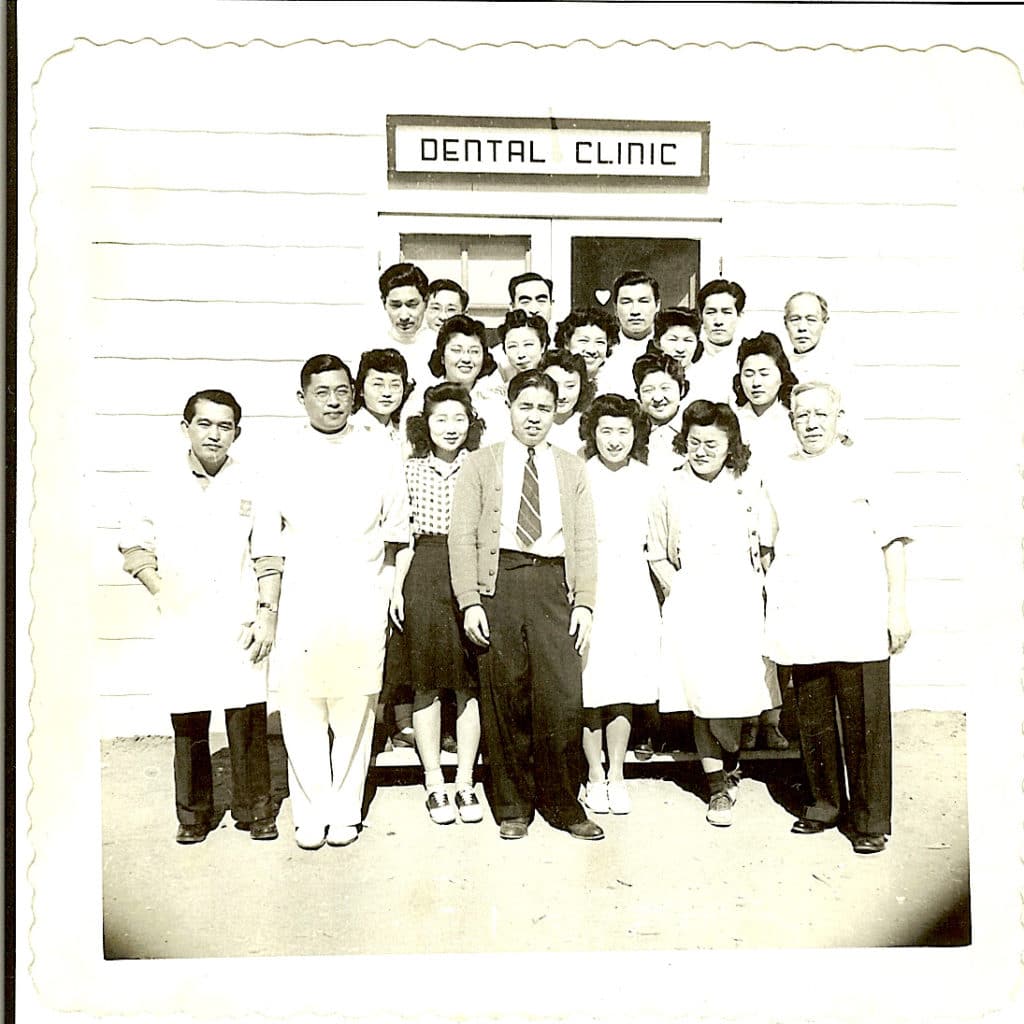
My father was very busy, he ran the dental office. I think that was the cause of his death,” Homma said.
Homma’s family was one of many who were separated during incarceration. Soon after Pearl Harbor was attacked, her grandparents, Mutsu Wada and Rev. Masahiko Wada, were arrested and placed in federal prison.
Both were Issei, or American immigrants born in Japan. They were well educated and of the Samurai class. Her grandfather had come to America to work as a Baptist minister in the Japanese community. Her grandmother taught Japanese.
“We think my grandmother was tortured. She was able to write Spencerian Script before the war but after she couldn’t write anything. The government still hasn’t released her file to us,” Homma said.
Homma’s grandmother wasn’t the only one that experienced irreparable personal loss. In the decades following, many have spoken out about family members having psychotic episodes, lifelong ailments or death due to incarceration.
Homma’s grandparents were released from federal prison in 1944 when her father suffered a stroke and a heart attack. The hospital staff at Amache was inadequate, so her mother nursed Homma’s father while the grandparents watched over her and her siblings. They never spoke of their time in prison.
“They were of the Samurai class. They were never supposed to be taken prisoner,” Homma said.
Homma and Tonai’s elders carried the same mindset, one that was prevalent throughout the concentration camps: 仕方がない, pronounced as shikataganai and translated as, “It can’t be helped.”
“My parents never expressed [resentment]. They were only trying to protect us. They didn’t want us to get bitter,” said Tonai. “They said, “shikataganai,” it can’t be helped so make the best of the situation.”
This phrase and its corresponding sentiment is ubiquitous in studies of Amache and the other concentration camps. However, not all agreed with a passive response.
Frank Emi is perhaps the most well-known internee who opposed incarceration. With his group named the Fair Play Committee he declared “No shikataganai.”
Upon arriving at the centers, internees were given a loyalty pledge. According to a 1994 documentary, Emi saw no problem with the questionnaire until numbers 27 and 28. The questions demanded that loyalty be proven in two ways: A willingness to fight for the U.S. and a rejection of all loyalty to Japan. Emi and many others found the questions insulting, partially considering that they had never “sworn allegiance” to Japan. They marked “no” in both boxes, later gaining them the name “The No-No Boys.”
For many who signed “no-no,” the risks were more complex. U.S. Federal law barred Issei, those born in Japan but now living in America, from becoming American citizens. If they rejected their Japanese citizenship they would be left stateless.
Thousands who showed resistance were either moved to federal prison or the Tule Lake Relocation Center. The recent podcast “Order 9066” qualified the conditions at Tule Lake as “under martial law,” including curfews, tear gas bombs and tanks.
John Okada’s 1957 book, “No-No Boy” depicted the lives of these men and those who chose “shikataganai.” Okada and others have described the split in the community that took place when those who capitulated looked at “The No-No Boys” as causing unnecessary trouble.
我慢 Gaman [We made due]
Under the watch of machine guns and searchlights, a life began to take shape. Kumiko Homma found solace in books. Min Tonai joined the popular Boy Scout troop along with Ken Kitajima. Kitajima’s favorite pastime was hunting outside the barbed wire, with the guards’ permission. Others worked in the wildly productive farm, the silkscreen shop, or the newspaper.
Many throughout Amache attempted to take marginal ownership over the barren landscape with the introduction of decorative and natural elements such as koi ponds, lawns, and trees.
“The trees we planted are still living. They were saplings when we got them so we didn’t get much shade,” Tonai said. “We chipped in to get grass seed to plant lawns but the directive came that we couldn’t water our lawn. But in the administration area, they had beautiful lawns.”
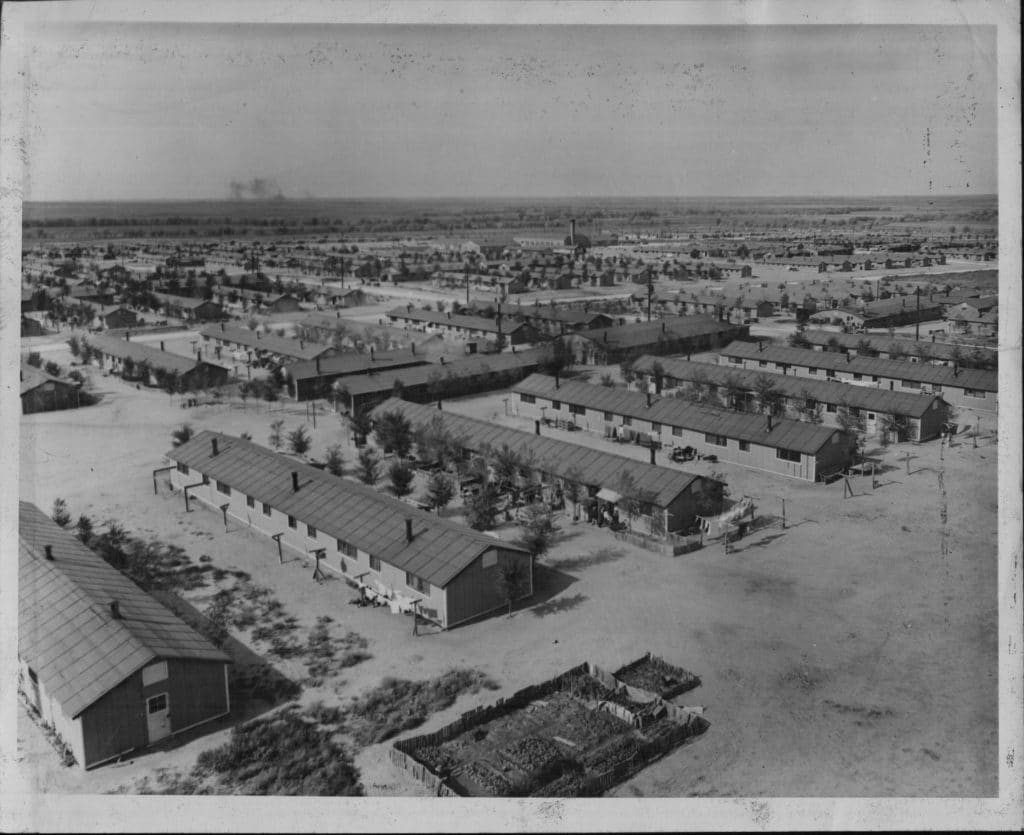
The use of gardens within Amache has been at the center of Bonnie Clark’s work. As an archaeology professor at the University of Denver, she is working to uncover the architecture of those buried years.
“When people disavow your humanity you do really humane things,” Clark said. “We see the hardship but we mostly see the ways that people [were] responding in that hardship.”
On June 16, Clark presented at an online event connecting survivors, descendants, scholars and artists, called “Tadaima!,” or “I’m home!” in Japanese. Her presentation, “Finding Solace in the Soil: An Archaeology of Gardens and Gardeners at Amache,” looked at the use of landscaping by internees within Amache.
Clark began her work with years of survivor interviews to better understand their future wishes for the use of the site. Their participation continued when she invited them and their families to join her on six archaeological digs.
“We have always had survivors and their descendants involved in the archaeology process. We collaborate right there in the field,” Clark said. “The synergy of that is a way where what we find brings up questions that we have conversations about. What we find helps elicit those stories.”
April Kamp-Whittaker, a former student of Clark’s, has helped expand the university’s Amache project to better understand the use of sports as a tool for community building.
Kamp-Whittaker studies have included baseball fields and basketball courts that reveal a network of recreation, providing a space for casual pick up games or community tournaments. Her team has even surveyed the location of a sumo pit.
“Ingenuity is something that we see over and over again in the reuse of materials, to take something that was basically trash and to turn it into something that was useful or turn it into art. We’ve tried to think about the expertise that people had,” Clark said.
This same spirit of resilience is what carried survivors through the time of detention and into life after the war.
Many of those detained lost houses, businesses and savings. Government videos urged them to begin a new life in the Midwest. Starting from scratch with palpable racist sentiment throughout the country, their world shifted again.
“We lost three years. We had to make up for it so we had to work seven days [a week]. One guy kept on the lights on his car so he could work through the night,” Tonai said.
Tonai’s parents were some of the many survivors who turned to menial labor when many white Americans refused to hire anyone appearing Japanese. Other families were unable to find someone who would rent a house to them. Many lived in tents, army barracks or by the kindness of others.
“Our family lived in a tent in an orchard for about three months where we agreed to harvest the land owner’s crop in exchange for permission to set up the tent where six of us lived like canned sardines,” Kitajima wrote.
The Japanese community, referred to by many as the “model minority,” buried their suffering. They sought success while searching for stability in an inhospitable land.
Homma saw how her family was treated better than others at Santa Anita and Amache due to her father’s high standing as a dentist. She would later meet her husband, a survivor of the Hiroshima bombing, in dental school. Their children are dentists as well, carrying on the legacy of their grandfather.
“There are a lot of people who never recovered, I’m one of the lucky ones. The best revenge is living well,” Homma said.
ただいま Tadaima [I’m home]
Seventy-eight years have passed since Order 9066 was signed. In 1988, survivors received a formal apology from President Ronald Reagan and $20,000 in reparations. Most of the survivors have since passed, leaving stories unheard by the generations to follow. Many are trying to fill the gaps of the things unsaid.
John Hopper was one of the first Coloradans outside of the Japanese community who worked to see Amache’s significance realized.
As a history teacher, and later principal, at the nearby Granada High School, Hopper saw the unique opportunity to show his students the remnants of history at their fingertips. Together they started The Amache Preservation Society. They partnered with other organizations, including Colorado Preservation Inc., to make history more accessible.
With multiple grants, the student society reinstalled the water tower and built a replication guard tower and barracks. The barracks will soon be filled with exhibits to better demonstrate life within Amache.
For those unable to drive the three hours from Denver, The Colorado History Center includes a model barracks in their “Stories of Colorado” exhibit. What would be the space for one family is larger than the actual size in order to be ADA compliant, but the room still reflects life in Amache. Artifacts of daily goings-on are sprinkled throughout: A baseball glove, a broom and a hot plate to make something more edible than anything the mess hall had to offer.
“We opened [the Amache exhibit] in 2012 and it has gotten so much support, not only from the Japanese community but also from teachers who really want that story out there. There’s a real range of people who are ready for it, but also people who don’t want to spend their two-hour museum visit in the headspace,” Director of Exhibit Planning Shannon Voirol said.
It is the combined efforts of these groups that has led to the consideration of Amache as a future National Historic Site.
With the comment period extended and placed online, the National Parks Service is hoping that all Coloradans share their thoughts, not just the Japanese American community.
Kimiko Marr is the founder of the Tadaima Virtual Pilgrimages (Tadaima!) and hapa-yonsei . Hapa denotes one parent as Japanese American and the other as non-Asian while yonsei indicates a fourth-generation Japanese American. As a descendant and activist, she is asking Coloradans to think about what they want for the future of their state.
“It is all of our history. Anyone who lives in Colorado has a right to say, ‘I lived here my whole life and I didn’t learn about it until I was in my 20’s and I feel betrayed,’” Marr said.
Marr has worked to expose the history of Amache and other detention centers through her extensive work as a filmmaker. She created Tadaima! after the popular “pilgrimages” were canceled due to COVID-19.
Pilgrimages to the various sites began in the 1970s, as childhood survivors came of age, and descendants learned their family’s hidden histories.
Order 9066 and its repercussions were once largely seen as shameful by older Japanese Americans due to cultural traditions. However, the official apology made by President Regan allowed for open discussion within the community.
Survivors and descendants from each site started planning official, yearly pilgrimages to share grief and hope.
Tears, prayers and stories mark the events—along with music and the celebration of an enduring community. This sentiment
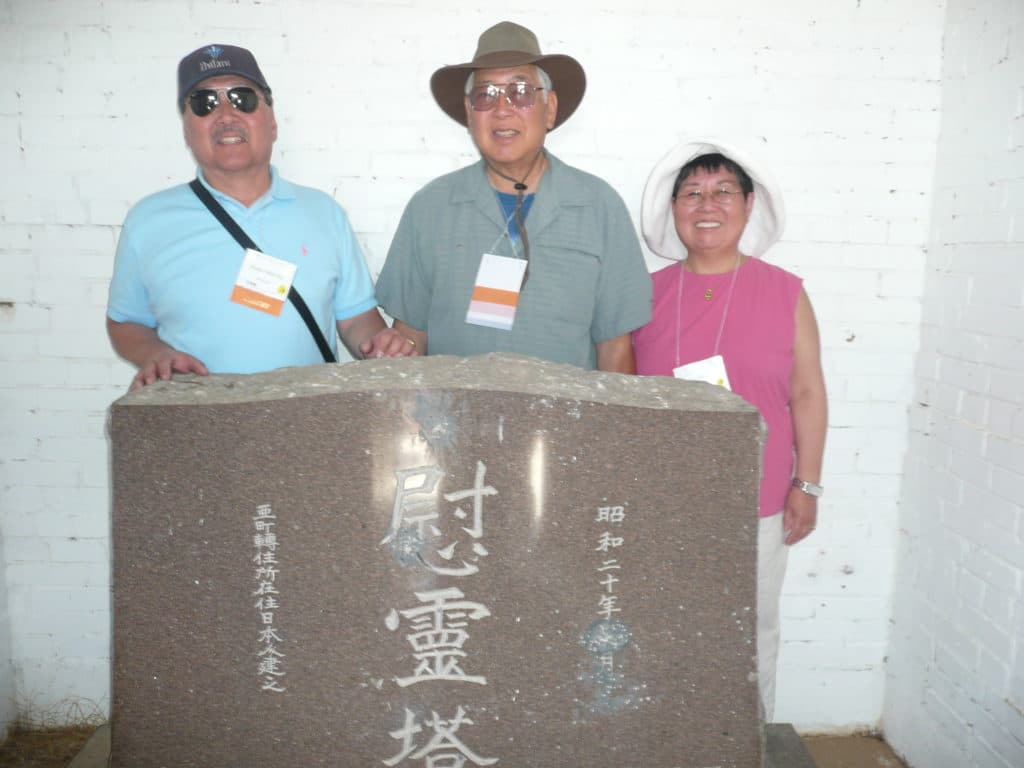
drove Marr to propel the event through COVID-19 with the creation of nine weeks of online content. Survivors and descendants were joined by scholars, dignitaries and artists—including the lauded George Takei, Bonnie Clark, Japanese ambassador to the U.S. Shinsuke J. Sugiyama and musician Kishi Bashi.
“I said, ‘We can’t wait because people aren’t going to live forever,’” Marr said. “It helped me to understand myself and how I fit into the world. I know that sounds really cheesy, but it really does.”
While some resources, such as copyrighted videos, have been taken off the site, the bulk of the content provided is still available. Marr plans to keep the site up and running to provide a library of sorts that can live on, a megaphone for the voices that are quickly disappearing.
Marr hopes that the website will also serve as a reminder to Americans of one of the most grievous betrayals of the Constitution in the 20th Century. Throughout Tadaima!, speakers declared the same sentiment: This could happen again.
“Those involved in the movement to crystalize the history of these survivors hope to see the fruits of their labor with the creation of Amache National Historic Site.
“We have to keep learning these things so people will speak up and say, ‘That’s not American,’” Marr said.
Despite extensive efforts by the Amache Preservation Society to protect the area from grazing cows and loitering locals, it is still in need of some love. Jeans and hiking boots are required to find your way through the sagebrush, past the prickers and to the remnants of a koi pond or mess hall.
The trees planted nearly eight decades ago stand sturdy against the unceasing wind. One offers some shade to a concrete block built by the first detainees to arrive. The name of one of the builders is carved in Japanese and English. An American, laying claim to the thing that he built.
“As we die off, who’s going to remember? Who’s going to remember when people are talking about putting Muslims into camps after 9/11? The first people that protested were the Japanese Americans Citizens League because we’ve already done that,” Kumiko Homma said.
If you’d like to leave a comment for the National Parks Service in regards to the future of Amache you can do so on their website. If you would like to learn more about the Japanese American experience you can visit the Tadaima! website, subscribe to the podcast Order 9066 or purchase Bonnie Clark’s book, “Finding Solace in the Soil: An Archaeology of Gardens and Gardeners at Amache”.

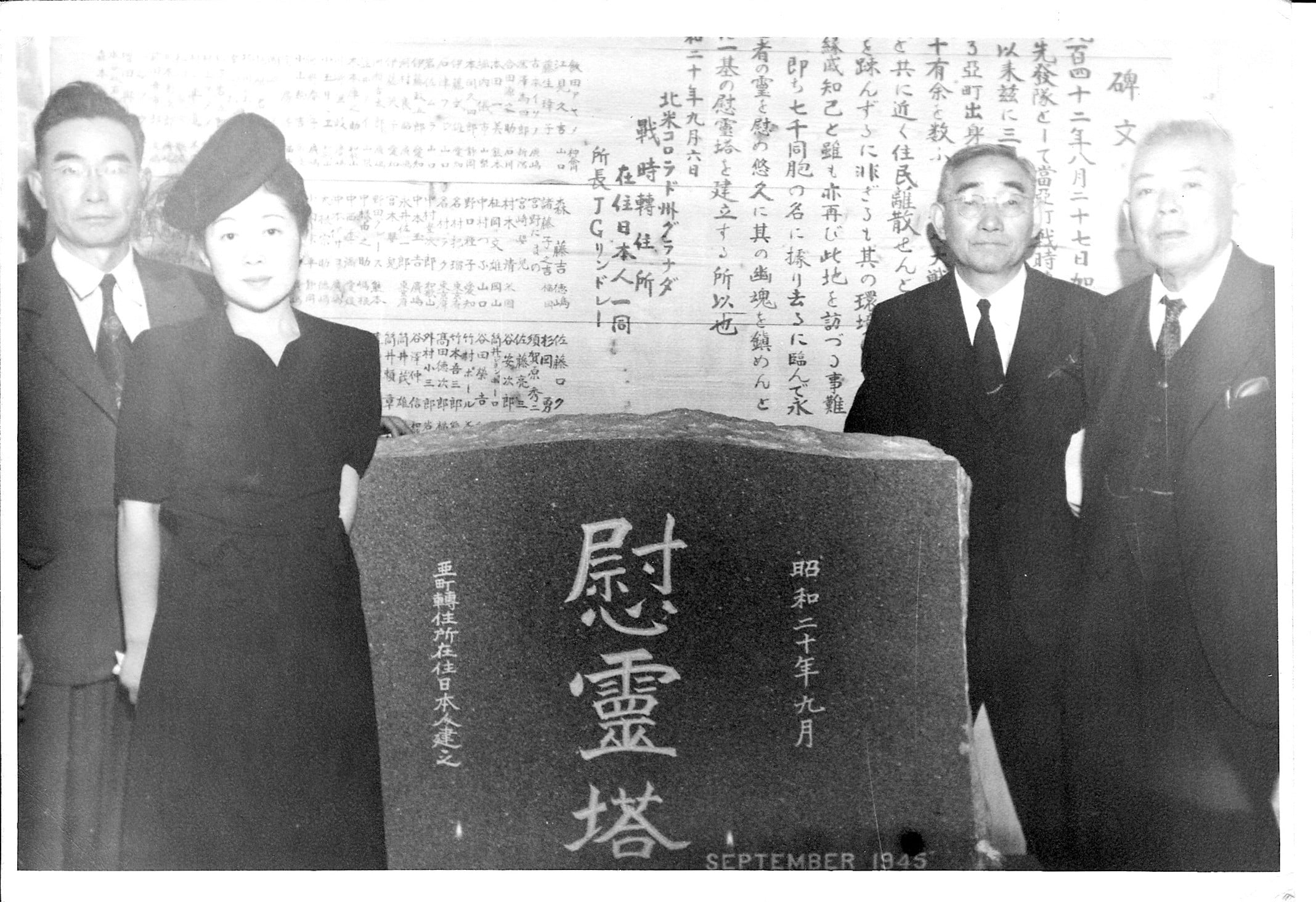

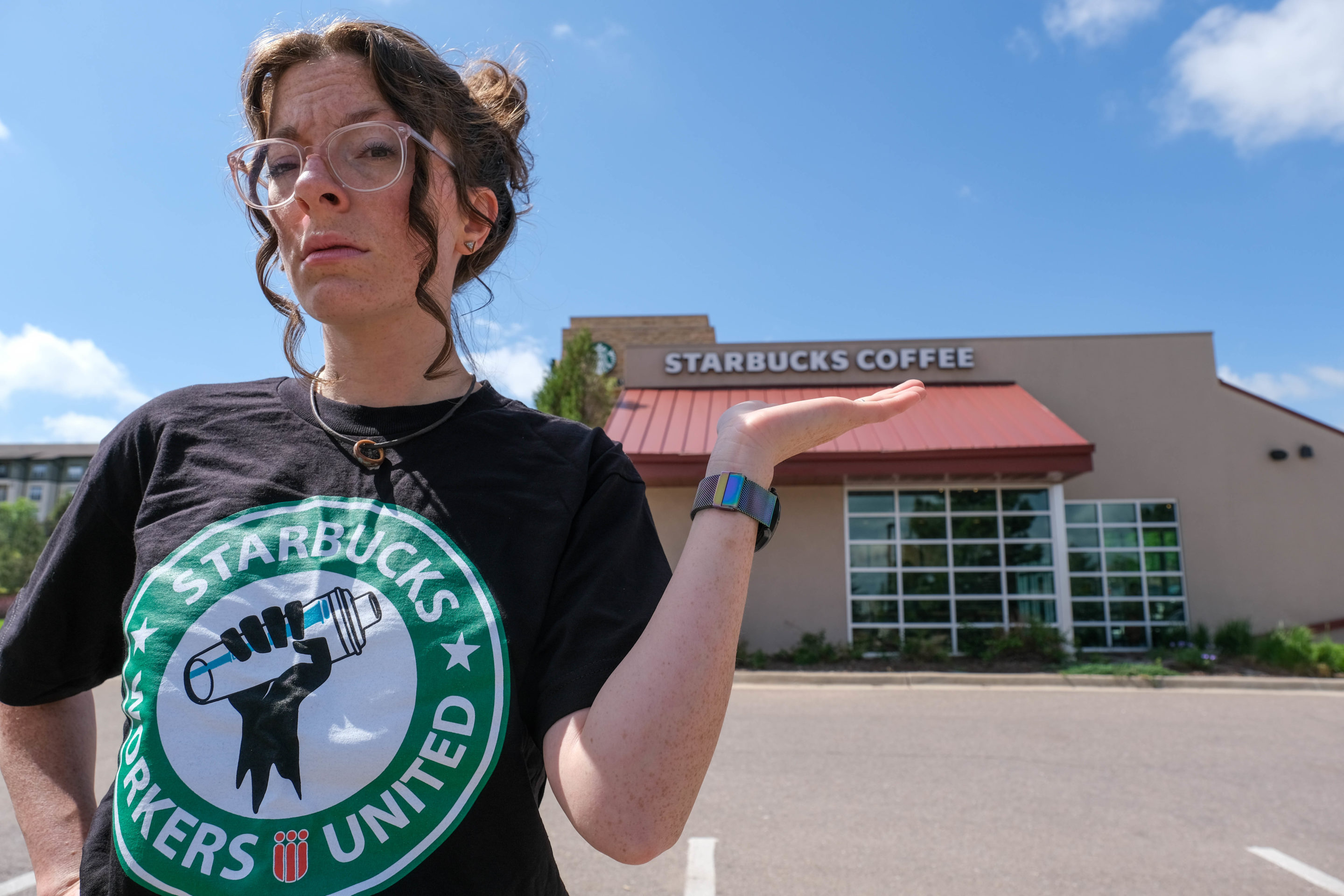
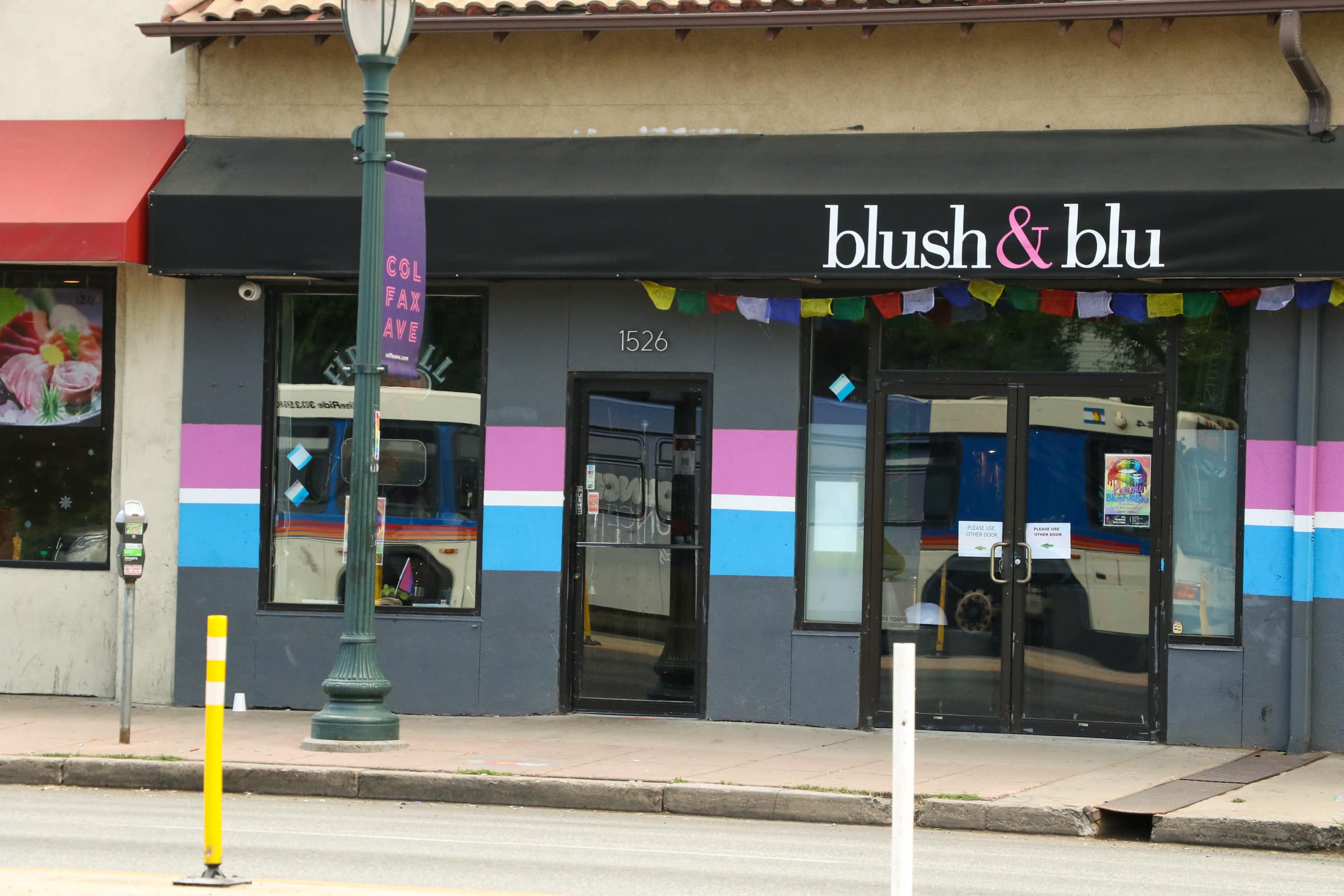
Hi Annie Burky, I wasn’t in your article but you thanked me in your cover email for participating in it?
Maybe you confused me with another?
Nice article!